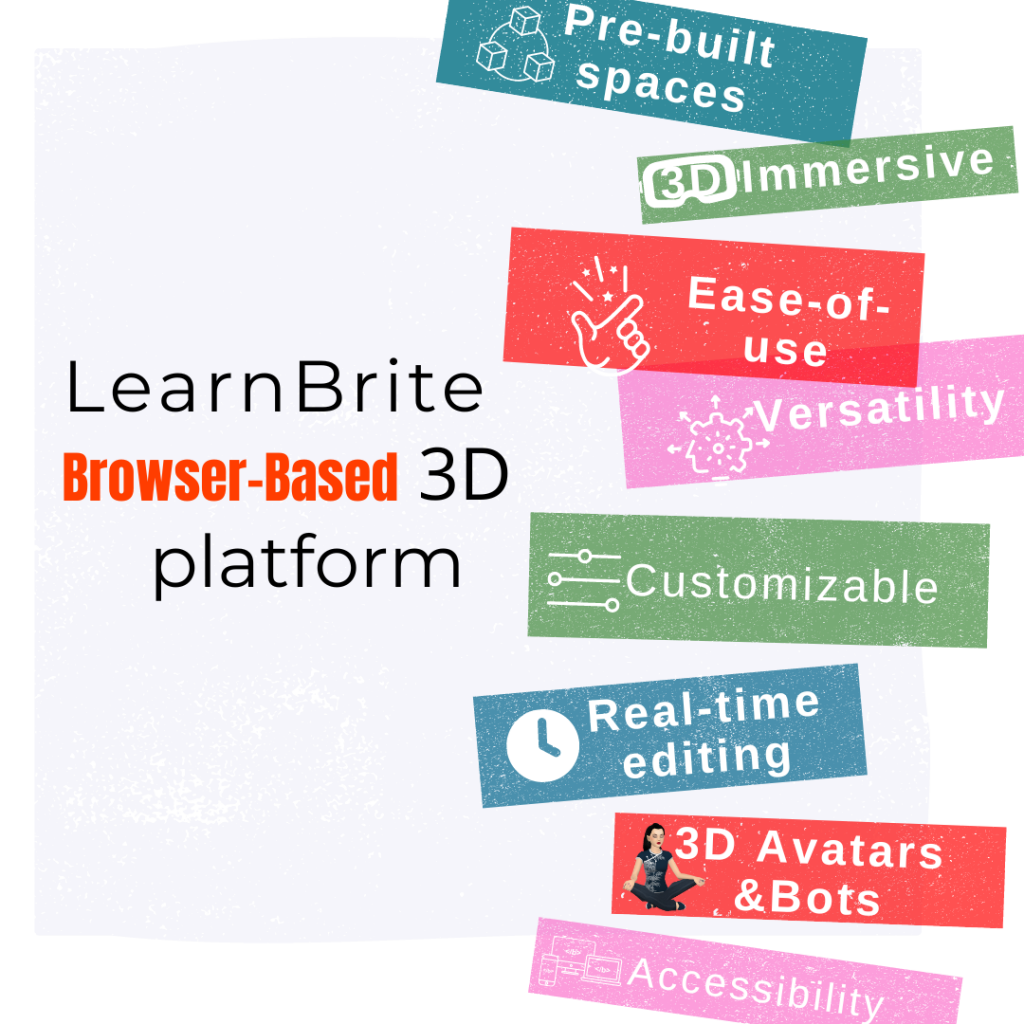Onboarding responsibilities are essential to ensuring a smooth and successful integration of new employees into an organization. A well-structured onboarding process can significantly impact employee engagement, job satisfaction, and long-term success within the company. This post will delve into the details of onboarding duties for instructional designers, learning and development experts, and e-learning agencies to understand how they can contribute to successful employee integration.
We will explore various onboarding processes and their benefits to employers and employees. You’ll gain insights into HR’s role in crafting onboarding responsibilities and effective onboarding experiences, as well as best practices for developing comprehensive programs that cater to diverse needs. Additionally, we will discuss how Technology can enhance the overall experience during this crucial period.
Finally, we’ll address measuring success through metrics and analytics used throughout the onboarding process – enabling you to make data-driven decisions that improve your program’s effectiveness over time.
Table of Contents:
- Introduction to Onboarding Responsibilities
- a. Definition of Onboarding
- b. Benefits of Onboarding
- c. Types of Onboarding Processes
- HR Role in the Onboarding Process
- Developing an Effective Onboarding Program
- Utilizing Technology to Enhance the Onboarding Experience
- Measuring Success with Metrics and Analytics during the Onboarding Process
- Frequently Asked Questions Onboarding Responsibilities
- Conclusion
1. Introduction to Onboarding Responsibilities
The onboarding process is a crucial aspect of an employee’s journey within an organization, as it sets the foundation for their future success and integration into the company culture. In this segment, we will explore the definition of onboarding, its advantages and the various processes involved.
a. Definition of Onboarding
Onboarding, also known as organizational socialization or induction training, refers to the systematic process through which new employees acquire the necessary knowledge, skills, behaviors and attitudes to become effective team and organization members. The SHRM underscores that a carefully constructed onboarding program can help lower attrition figures while concurrently boosting employee commitment.
b. Benefits of Onboarding
- Faster time-to-productivity: A structured onboarding program accelerates new hires’ learning curve by promptly providing them with essential information about their roles and responsibilities.
- Better retention rates: Employees who undergo comprehensive orientation are more likely to stay with their employer longer due to increased job satisfaction levels resulting from clear expectations during the initial phase.
- Cultural alignment: Effective onboarding programs help integrate newcomers into existing teams by fostering colleague relationships while promoting an understanding of shared values and goals within the company culture.
- Informed decision-making: By equipping new hires with the relevant tools and resources needed for optimal performance at work, they can make informed decisions based on accurate data instead of relying solely upon intuition or guesswork.
Effective onboarding experiences are crucial during the onboarding period to ensure new hires feel welcomed and supported in the work environment. Building relationships with team members and senior leaders can help new employees feel more connected to the organization. Human resources professionals play a key role in onboarding by providing necessary information and resources, such as onboarding checklists and orientation materials, to help new hires navigate their initial days with the company. A well-designed onboarding program sets a strong foundation for success and organizational engagement for new employees.
c. Types of Onboarding Processes
There are several types of onboarding processes, each tailored to meet specific organizational needs and objectives. These include:
- Formal onboarding: This structured approach involves planned activities such as orientation sessions, training workshops, and mentorship programs aimed at helping new employees acclimate to their roles.
- Informal onboarding: Unlike formal methods, which follow predefined guidelines, informal approaches rely upon spontaneous interactions between coworkers or supervisors who provide guidance based on individual requirements during daily work routines.
- Socialization-based onboarding: Focused primarily upon relationship-building among peers; this type encourages collaboration through team-building exercises or group projects designed specifically for newcomers within an organization.
- E-learning-based onboarding: Leveraging digital platforms like LearnBrite’s no-code platform enables organizations to create immersive learning experiences that new hires can access remotely at their convenience – making it ideal for remote teams or global companies with multiple locations worldwide.

Onboarding is an important process that can quickly help new employees acclimate to their roles and environment. HR plays a vital role in the onboarding process, so organizations must understand what duties they are responsible for during this time.
Unleash the full potential of your Metaverse with LearnBrite 100+ integrations, seamlessly connecting with popular tools such as Zoom, Hopin, Cornerstone OnDemand, Articulate, Slack, and more, amplifying your virtual experiences with the tools you already know and love.
Key Takeaway:
A no-code platform is being developed to create 3D learning scenarios for various types of training, such as employee onboarding and soft skills development. The topic chosen for this scenario is “onboarding responsibilities.”
2. HR Role in the Onboarding Process
HR professionals are instrumental in ensuring the onboarding process for new employees is successful, from coordinating with other departments to creating a welcoming environment. HR professionals have numerous responsibilities, from coordinating with various departments to creating a welcoming environment during onboarding.
a. Overview of HR Role in Onboarding
In general, the HR role in onboarding involves planning and executing activities designed to help new hires become productive members of their teams as quickly as possible. This includes preparing the necessary paperwork, conducting orientation sessions, providing training materials, and monitoring progress throughout the initial months of employment.
b. Duties and Responsibilities of HR During Onboarding
Some specific onboarding duties that fall under the purview of HR include:
- Preparation before arrival: Ensuring all required documents are ready for signing upon arrival; setting up workstations or access to critical systems; scheduling introductory meetings with team members or managers.
- Welcome and orientation: Greeting new employees on their first day; giving them a tour of facilities; presenting company policies, values, and culture;
- Skill development: Identifying skill gaps and organizing relevant training programs to address these needs;
- Mentorship program setup: Selecting suitable mentors who can guide newcomers through their initial days at work;
- Evaluation and feedback collection: Gather feedback from both parties – new hires & existing staff – about the effectiveness of the onboarding process and making necessary adjustments.
c. Tips for Effective HR Management During Onboarding
To ensure that your organization’s onboarding responsibilities are effectively managed, consider these tips:
- Create a comprehensive checklist: Develop a detailed list of tasks to complete during onboarding. This will help you stay organized and ensure nothing is overlooked.
- Prioritize communication: Maintain open lines of communication with new hires throughout their first few months at work. Regular check-ins can help identify any issues or concerns early on, allowing for prompt resolution.
- Incorporate team-building activities: Encourage relationship-building among colleagues by organizing events or activities designed to foster camaraderie within teams.
- Leverage technology: Utilize digital tools such as e-learning platforms like LearnBrite to streamline training processes and make learning more engaging for employees (in section four).
- Evaluate success regularly: Analyze metrics related to employee performance and satisfaction during onboarding to improve your program continually (discussed further in section five).>
HR’s involvement in the onboarding experience is pivotal for guaranteeing that fresh hires seamlessly transition into their new roles. To ensure successful onboarding, organizations should develop an effective onboarding program with key components and best practices for success.
Key Takeaway:
We’re developing a no-code platform that creates immersive 3D learning scenarios for various training needs, such as employee onboarding, soft skills training, and gamified learning. The topic we’ll be focusing on is the responsibilities of new hires during their onboarding process.
3. Developing an Effective Onboarding Program
An effective onboarding program ensures new employees feel welcomed, engaged, and prepared to contribute to their organization’s success. Organizations can make the onboarding process more efficient and equip new hires for long-term success by following a systematic approach.
a. Steps for Creating an Effective Onboarding Program
- Define your objectives: Determine what you want your onboarding program to achieve regarding employee engagement, retention, productivity, and overall satisfaction.
- Create a timeline: Establish a clear timeline outlining when each step of the onboarding process should occur – from pre-arrival preparations to post-hire follow-ups.
- Develop content: Create engaging materials communicating important information about company culture, values, policies and procedures, and job-specific training modules.
- Select appropriate delivery methods: Choose between various delivery methods, such as instructor-led sessions or self-paced e-learning courses, based on your organization’s and target audience’s needs.
- Gather feedback: Regularly solicit feedback from new hires and managers involved to identify areas where improvements can be made.>
b. Components of an Effective Onboarding Program
- Orientation session(s): Introduce new employees to company culture by providing essential information about organizational values, mission statement, policies, procedures and benefits.
- Job-specific training: Equip new hires with the necessary skills and knowledge to perform their duties effectively through targeted training sessions.
- Mentorship program: Pair new employees with experienced colleagues who can provide guidance, support, and encouragement during onboarding.
- Social integration activities: Facilitate opportunities for new hires to connect with their peers and build organizational relationships.
c. Best Practices for Developing an Effective Onboarding Program
To maximize the effectiveness of your onboarding program, consider implementing these best practices:
- Incorporate interactive elements: Create engaging learning experiences by incorporating interactive components such as quizzes, simulations or group discussions into your onboarding materials.
- Utilize immersive technologies: Leverage cutting-edge tools like LearnBrite’s no-code platform to produce immersive 3D experiential learning scenarios that enhance engagement and retention among learners.
- Prioritize personalization: Tailor content based on individual employee needs – considering factors such as role requirements, prior experience,&&learning preferences – to create a more relevant and impactful experience.

A thorough induction program guarantees that new hires have the necessary support and resources for success. Leveraging Technology can further enhance the employee experience during onboarding, leading to improved engagement and productivity.
Key Takeaway:
We’re creating a no-code platform that produces immersive 3D learning scenarios for various types of training, including onboarding responsibilities. Our platform offers gamified learning and role-play simulations to enhance the employee’s experience.
4. Utilizing Technology to Enhance the Onboarding Experience
In the digital era, tech is essential in optimizing and improving onboarding processes. By leveraging cutting-edge tools and platforms like LearnBrite, organizations can create immersive 3D experiential learning scenarios that improve employee engagement, retention, and overall satisfaction during onboarding.
a. Benefits of Using Technology in the Onboarding Process
- Increased efficiency: Automation helps reduce manual tasks for HR professionals while ensuring all new hires receive consistent information throughout their onboarding experience.
- Better engagement: Interactive e-learning modules or gamified learning experiences keep employees engaged and motivated as they acquire essential skills for their roles.
- Easier tracking & reporting: Digital tools enable real-time progress monitoring, allowing managers to identify areas where additional support may be needed.
- Simplified communication: Online collaboration platforms facilitate seamless communication between new hires, mentors, peers, and supervisors during the onboarding period.
b. Examples of Technology Used in the Onboarding Process
- No-code platforms: Tools like LearnBrite allow instructional designers to create immersive learning experiences without any coding knowledge required – perfect for self-paced courses or instructor-led training sessions.
- LMS (Learning Management Systems): Platforms such as Moodle or TalentLMS help manage course content delivery while providing assessment capabilities to measure employee performance effectively.
Employers can immediately guarantee their fresh hires are enthused and inspired by exploiting tech to refine the onboarding process. Additionally, utilizing metrics and analytics during onboarding is essential for measuring success to optimize future experiences.“Enhance your onboarding process with Technology. Utilize immersive 3D scenarios and interactive e-learning modules to engage, track progress, and simplify communication. #onboarding #technology”Click to Tweet
5. Measuring Success with Metrics and Analytics during the Onboarding Process
To continuously improve your onboarding process, measuring its success using relevant metrics and analytics is essential. This section will look into how you can effectively employ metrics and analytics for your onboarding process, with illustrations of some performance indicators (KPIs) that could be used to evaluate its success.
a. Overview of Metrics and Analytics Used During the Onboarding Process
Metrics and analytics play a crucial role in assessing the success of any onboarding program by providing data-driven insights into various aspects such as employee engagement, retention rates, productivity levels, etc. By tracking these KPIs over time, HR professionals can identify areas for improvement and make necessary adjustments to enhance their overall onboarding experience.
b. Examples of Metrics and Analytics Used During the Onboarding Process
- Time-to-Productivity: The time it takes for new hires to reach full productivity within their roles is a critical metric in determining whether or not they have been onboarded successfully. SHRM provides more information about this important KPI here.
- New Hire Retention Rate: Tracking employee retention rates among new hires helps organizations understand if their onboarding processes effectively keep employees engaged long-term. Gallup’s research shows that millennials are especially prone to job hopping, making this metric particularly important for companies looking to retain top talent from younger generations.
- Employee Satisfaction: Measuring employee satisfaction during onboarding can provide valuable insights into how well new hires adjust to their roles and the company culture. This can be done through surveys, interviews, or other feedback mechanisms. Qualtrics offers a comprehensive guide for creating effective onboarding survey questions.
- Training Completion Rates: Ensuring that employees complete all required training modules is essential to any successful onboarding program. Tracking completion rates helps identify potential bottlenecks in the learning process and areas where additional support may be needed.
c. Tips for Utilizing Metrics and Analytics to Measure Success During the Onboarding Process
To make the most out of metrics and analytics during your onboarding process, consider implementing these best practices:
- Create clear objectives: Establish specific goals for your onboarding program, so you have a benchmark against which to measure success.
- Select relevant KPIs: Choose KPIs that align with your organization’s unique needs and objectives – not just those commonly used by others in your industry.
- Gather data consistently: Consistently collect data throughout the entire duration of each employee’s onboarding experience so you can track progress over time and identify trends or patterns in performance..}
Key Takeaway:
A no-code platform is being developed to create immersive 3D learning scenarios for various training purposes, such as employee onboarding and soft skills development. The topic of focus is the responsibilities involved in onboarding new employees.
Frequently Asked Questions Onboarding Responsibilities
What are its responsibilities in the onboarding process?
The primary responsibilities in the onboarding process include designing an effective program, facilitating a smooth transition for new hires, providing necessary resources and training, fostering a welcoming environment, monitoring progress through metrics and analytics, and continuously improving the overall experience. These tasks often involve collaboration between HR professionals, instructional designers, managers and other stakeholders.
What are the 5 Cs of onboarding?
The 5 C’s of onboarding refer to five key components that contribute to an effective program: Compliance (understanding policies), Clarification (clear expectations), Culture (company values), Connection (building relationships) and Check Backs (ongoing feedback). Addressing these areas during employee orientation or training sessions within their first weeks at work can help ensure successful integration into their new role.
What are the 4 C’s of effective onboarding?
The 4 C’s of effective onboarding encompass four essential elements: Compliance (learning rules/regulations), Clarification (defining job roles/expectations), Culture Integration (embracing company values/norms) and Connection Building(establishing relationships with colleagues). Focusing efforts on these aspects will lead to smoother transitions for new employees while promoting long-term retention rates within organizations.
What is the 6 Cs of Onboarding?
The six Cs model expands upon previous frameworks by adding two additional dimensions,” Competence development(training/skill-building opportunities)and Career planning(growth/professional advancement support) to create a more comprehensive approach towards ensuring success during the initial stages after joining companies. This holistic perspective emphasizes the importance of immediate needs and future aspirations when integrating staff members effectively throughout their tenure at an organization.
Conclusion
Onboarding responsibilities are a critical part of the employee experience. When done right, they can set up new hires for success and help to create an engaging workplace culture. HR teams must take ownership of this process by creating effective onboarding programs, utilizing Technology where possible, and measuring success with metrics and analytics. By doing so, companies will be better equipped to attract top talent while ensuring their employees have the best possible start.
Secure the future of your Metaverse with LearnBrite’s cutting-edge browser-based platform that allows seamless access on smartphones, tablets, laptops, and VR/AR headsets, without the need for downloads or software installations. Stay ahead of the curve and ensure universal accessibility for all users, making your Metaverse experience truly inclusive and future-proof.
Experience the power of immersive 3D learning with LearnBrite and take your onboarding responsibilities to the next level. Leverage our platform to create engaging, effective courses that drive real results for your organization.


Recent Comments